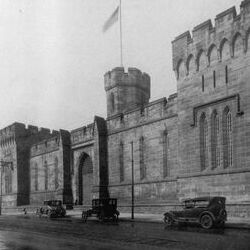It began as a concept, a desire to do better.
In 1787, a group of notable Philadelphians set forth a revolutionary vision to reimagine our young nation’s justice system as one rooted in fairness and dignity rather than punishment and retribution. In 1829, Eastern State opened, becoming America’s first penitentiary. From then until 1971, Eastern State Penitentiary saw more than 85,000 people pass through its front gate before it ceased operations.
Today, the story continues with all of us. Guided by our continued desire to craft a more just future, Eastern State convenes important conversations that deepen our collective understanding of the justice system in America. From the site of America’s first penitentiary, we forge connections with people across the country and around the world. As a national leader in justice education, we build awareness of the past, illuminate the present, and inspire action.
The story continues—learn about our vision for the future.
Organizational StrategyAdditional Resources
Support the power of history to change the future.
Eastern State has always been more than a relic of the past. It is a living, breathing space where history, education, and justice converge.
With the help of a bold new strategic plan, we’re entering a new era in the remarkable history of this powerful place. We’re poised to reimagine the visitor experience, advance historic preservation efforts, expand workforce development programs, deepen justice education programs, and strengthen our organizational capacity.
Your support makes all this and more possible.



